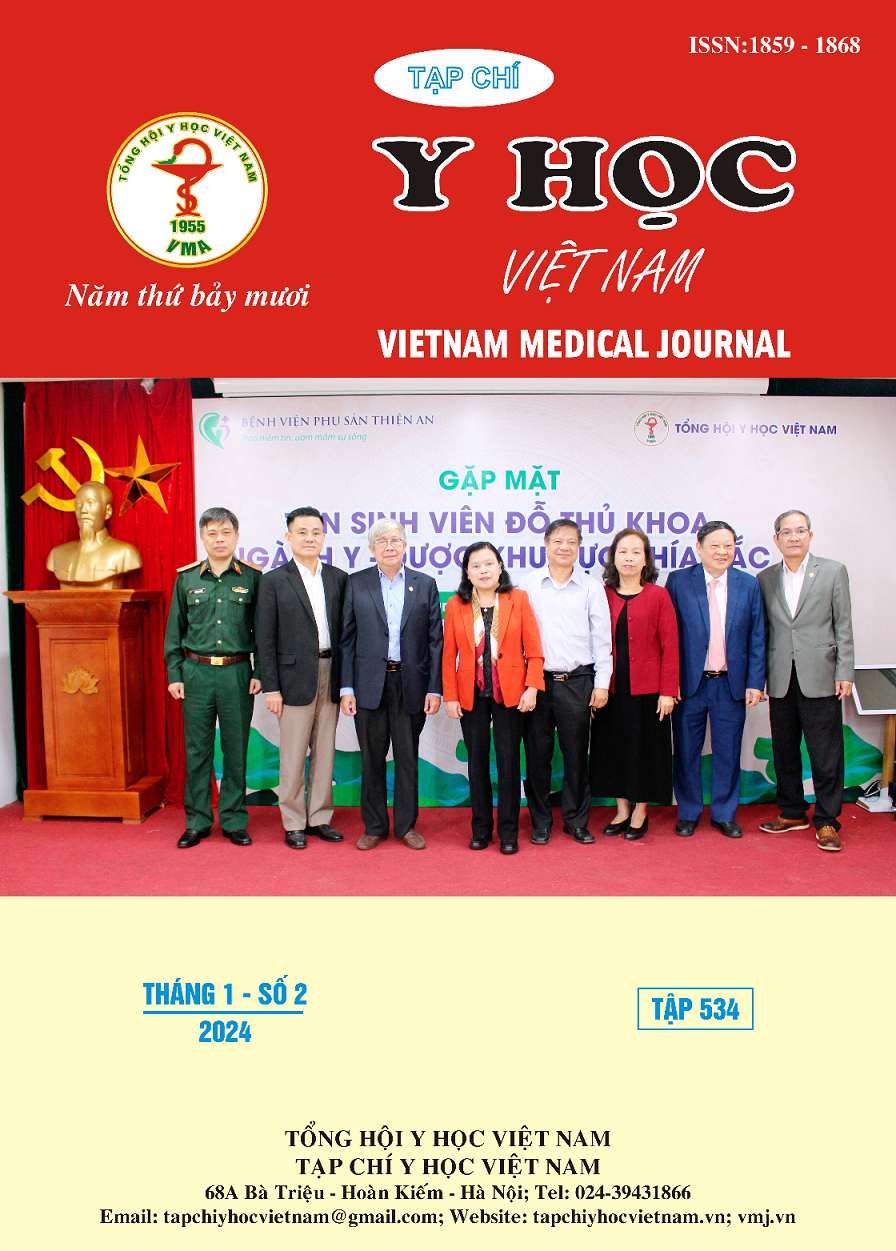CLINICAL AND RADIOLOGICAL CHARACTERISTICS OF PATIENTS INDICATED FOR IMMEDIATE IMPLANT PLACEMENT IN THE POSTERIOR TEETH AREA USING THE DUAL-ZONE TECHNIQUE
Main Article Content
Abstract
Objective: To describe the clinical and radiological characteristics of a group of patients indicated for immediate implant placement in the posterior teeth using the Dual-zone technique at 225 Truong Chinh Dental Center - Hanoi Medical University. Subjects and methods: Research method is case series study design. The study subjects were patients whose posterior teeth in both jaws from the first premolar to the second molar were damaged and required immediate implant placement. Results: The study showed that the most common reasons for tooth extraction were tooth decay and pulp disease, accounting for 47.1%. The most common study subjects were aged 40-59, accounting for 52.9%. Bone density is mainly D3, accounting for 61.8%. The outer and inner bone plates in the molars are >1.5mm in size. The ratio of lower molars accounts for 58.8%, higher than the upper molars. The average distance from the sinus floor to the furcation area is 13.04 ± 3.85, the average distance from the inferior alveolar nerve canal to the furcation area is 16.34 ± 3.22. The average bone size in the maxillary area is 3.60, the mandibular area is 3.09. The inner root tip has the shortest distance from the sinus floor, the mesial root tip of the molars has the furthest distance from the inferior alveolar nerve canal. Conclusion: The anatomy of the maxillary and mandibular alveolar points both have suitable bone height for immediate implant placement. However, with small bone size and low bone density, it will be a challenge for clinicians to place implants in the correct position and achieve good initial stability.
Article Details
References
2. Chu SJ, Salama MA, Salama H, Garber DA, Saito H, Sarnachiaro GO, Tarnow DP. The dual-zone therapeutic concept of managing immediate implant placement and provisional restoration in anterior extraction sockets. Compend Contin Educ Dent. 2012 Jul-Aug;33(7):524-32, 534. PMID: 22908601.
3. Đỗ Đình Hùng (2012). Nghiên cứu đặc điểm lâm sàng, X quang và kết quả điều trị trên bệnh nhân cấy ghép nha khoa có ứng dụng công nghệ thông tin. Luận án tiến sỹ y học, Viện nghiên cứu khoa học Y Dược lâm sàng 108.
4. Hoàng Xuân Hùng (2021). Sử dụng máng hướng dẫn phẫu thuật cấy ghép implant muộn cho bệnh nhân mất răng từng phần vùng răng sau. Đại học Y Hà Nội. Luận án Thạc sỹ Y học
5. Agostinelli C, Agostinelli A, Berardini M, Trisi P: Anatomical and radiologic evaluation of the dimensions of upper molar alveoli. Implant Dent. 2018, 27:171-6. 10.1097/ID.0000000000000747
6. Aldahlawi S, Nourah DM, Azab RY, Binyaseen JA, Alsehli EA, Zamzami HF, Bukhari OM. Cone-Beam Computed Tomography (CBCT)-Based Assessment of the Alveolar Bone Anatomy of the Maxillary and Mandibular Molars: Implication for Immediate Implant Placement. Cureus. 2023 Jul 9;15(7):e41608. doi: 10.7759/cureus.41608. PMID: 37565092; PMCID: PMC10409627.
7. Padhye NM, Shirsekar VU, Bhatavadekar NB. Three-Dimensional Alveolar Bone Assessment of Mandibular First Molars with Implications for Immediate Implant Placement. Int J Periodontics Restorative Dent. 2020 Jul/Aug;40(4):e163-e167. doi: 10.11607/prd.4614. PMID: 32559042.
8. Aksoy U, Aksoy S, Orhan K: A cone-beam computed tomography study of the anatomical relationships between mandibular teeth and the mandibular canal, with a review of the current literature. Microsc Res Tech. 2018, 81:308-14. 10.1002/jemt.22980


